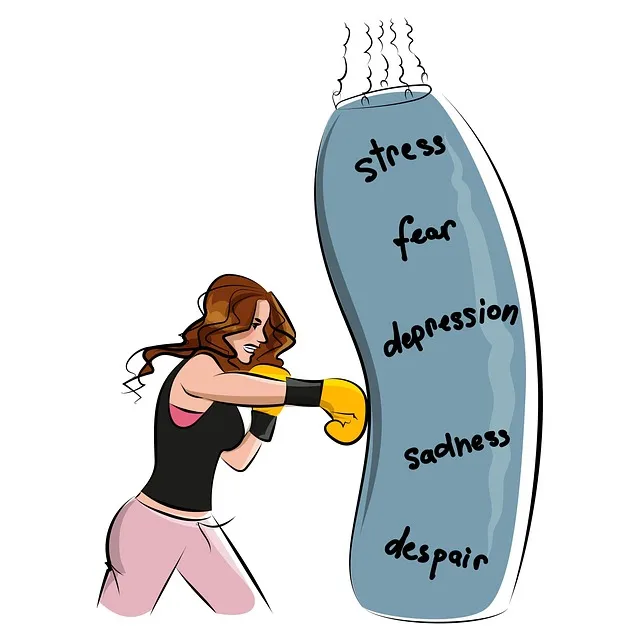The Kaiser Permanente mental health number (KP MHN) is a strategic tool for enhancing mental well-being and reducing stress, both personally and organizationally. By prioritizing mental health, as promoted by initiatives like Compassion Cultivation, KP MHN provides a structured framework for risk management, particularly in complex client scenarios. Through simple practices like Mental Wellness Journaling, individuals can cultivate optimism, gratitude, and emotional resilience, while organizations can develop tailored action plans based on assessment results to foster superior mental health outcomes among employees.
Positive thinking exercises are a powerful tool for enhancing mental well-being, as backed by research and advocated by organizations like Kaiser Permanente. This article explores how adopting a positive mindset can significantly impact your mental health, with a focus on implementing the Kaiser Permanente Mental Health Number—a simple yet effective practice. We’ll provide a step-by-step guide to get you started and share strategies to integrate positive thinking exercises into your daily routine for superior mental well-being.
- Understanding Positive Thinking and Its Impact on Mental Health
- Implementing the Kaiser Permanente Mental Health Number: A Step-by-Step Guide
- Enhancing Daily Routines with Positive Thinking Exercises
Understanding Positive Thinking and Its Impact on Mental Health

Positive thinking is a powerful tool that can significantly impact an individual’s mental health and overall well-being. It involves cultivating a mindset focused on optimism, gratitude, and positive self-talk, which has been linked to reduced stress levels and improved emotional resilience. By embracing positive thinking exercises, individuals can transform their perceptions and reframe negative thoughts into more constructive and uplifting ones. This shift in perspective empowers people to better cope with challenges, fostering a sense of calm and enhancing their overall mental fortitude.
According to organizations like Kaiser Permanente, prioritizing mental health is essential for overall wellness. The mental health number at Kaiser Permanente highlights their commitment to supporting individuals in managing and improving their mental well-being. Practices such as Compassion Cultivation can play a pivotal role in this process. By incorporating these mindfulness-based strategies into daily routines, people can increase self-awareness, develop empathy, and foster a deeper connection with their thoughts and emotions. This proactive approach to mental health awareness is crucial for risk management planning, especially among mental health professionals who are constantly navigating complex client scenarios.
Implementing the Kaiser Permanente Mental Health Number: A Step-by-Step Guide

Implementing the Kaiser Permanente Mental Health Number (KP MHN) is a powerful step toward enhancing mental well-being and reducing stress among individuals and organizations alike. This simple yet effective tool serves as a risk assessment for mental health professionals, offering a structured framework to gauge and improve overall mental health practices.
Here’s a step-by-step guide to integrating the KP MHN:
1. Understand the Scale: Familiarize yourself with the KP MHN scale, which typically evaluates various aspects of mental health, including stress management, coping strategies, and emotional resilience.
2. Identify Target Group: Decide who will be taking the assessment—whether it’s employees within an organization, clients in a therapy setting, or specific demographics at risk for mental health issues.
3. Distribute and Collect: Make the KP MHN accessible through online platforms or printouts. Ensure anonymity to encourage honest responses. Collect completed assessments for analysis.
4. Analyze Results: Review the data collected, focusing on individual and collective trends. Identify areas of concern, such as high stress levels or low coping mechanism scores.
5. Develop Action Plans: Based on the findings, create tailored Stress Management Workshops Organization to address identified gaps. These workshops can cover topics like mindfulness, resilience-building, and effective communication strategies.
6. Implement and Monitor: Roll out the workshops and continuously monitor their impact using subsequent KP MHN assessments. Adjust interventions as needed based on ongoing feedback and evolving mental health needs.
Enhancing Daily Routines with Positive Thinking Exercises

Incorporating positive thinking exercises into daily routines is a powerful strategy for enhancing mental wellness, as advocated by experts at Kaiser Permanente. These practices can transform your perspective and overall well-being. A simple yet effective method is to start a Mental Wellness Journaling Exercise. Dedicate a few minutes each day to reflect and record your thoughts, focusing on the positive aspects of your life. This practice not only helps in identifying and appreciating good moments but also provides an outlet for emotions, serving as a valuable coping skill.
By making this a regular habit, you can significantly improve your Stress Management and develop more resilient Coping Skills. The Kaiser Permanente mental health number serves as a reminder that prioritizing mental health is essential, and these exercises provide a practical way to initiate positive changes in one’s daily life.
Positive thinking exercises, as demonstrated through the implementation of the Kaiser Permanente Mental Health Number, offer a powerful tool for enhancing mental well-being. By integrating these practices into daily routines, individuals can cultivate resilience, improve coping mechanisms, and ultimately achieve a superior quality of life. The step-by-step guide provided serves as a starting point, encouraging readers to explore and adapt these strategies to their unique needs. Embracing positive thinking is not just a choice; it’s a transformative journey that can lead to improved mental health and overall life satisfaction.






